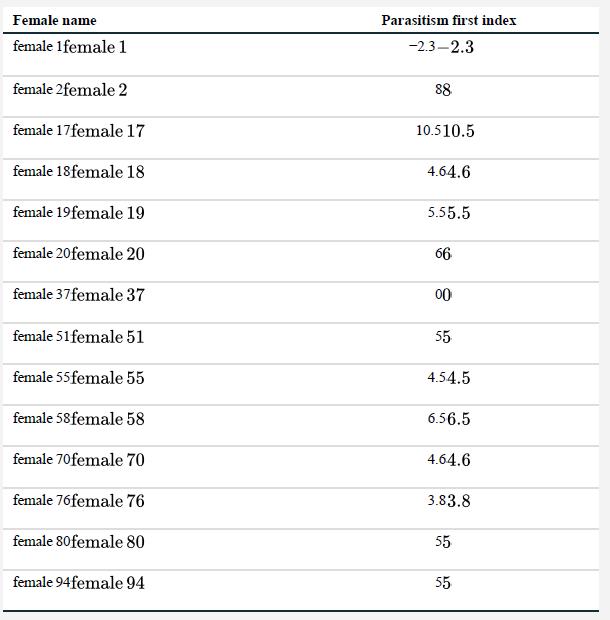Calculation practice: The sign test. Female goldeneyes (a kind of duck) lay eggs in other females nests,
Question:
Calculation practice: The sign test. Female goldeneyes (a kind of duck) lay eggs in other females’ nests, in addition to the eggs they produce and raise in their own nests. One advantage to a female of this parasitic behavior is that other females do the work of raising her offspring.
Andersson and Åhlund (2012) measured which of the eggs produced by 14 female goldeneyes were laid in other nests and which were laid in their own nests. We have converted their data into a “parasitism first” index,given below. The index is positive if a female tends to lay her earliest eggs parasitically in others’ nests (and keeps the later ones for herself to raise).
The index is negative if she tends to lay her last eggs in others’ nests (and keeps the earlier ones). The index is zero if she alternates and her parasitic eggs are neither earlier nor later on average than eggs she keeps in her own nest.


Using the following steps, test whether goldeneyes tend to lay their eggs in others’ nests before laying in their own.
a. Plot these data. Do they look normally distributed?
b. Why is a sign test suitable for these data?
c. What is the null hypothesis and the alternative hypothesis for this test?
d. Convert each data point into a positive or negative score, to express its value relative to the value stated in the null hypothesis.
e. After discarding the values that equal the value stated in the null hypothesis, what is the remaining sample size?
f. Conduct a binomial test using the observed positive and negative scores against the null expectation that half are positive and half are negative.
g. What can you conclude about the golden-eyes’ behavior based on this test?
Step by Step Answer:

The Analysis Of Biological Data
ISBN: 9781319226237
3rd Edition
Authors: Michael C. Whitlock, Dolph Schluter





